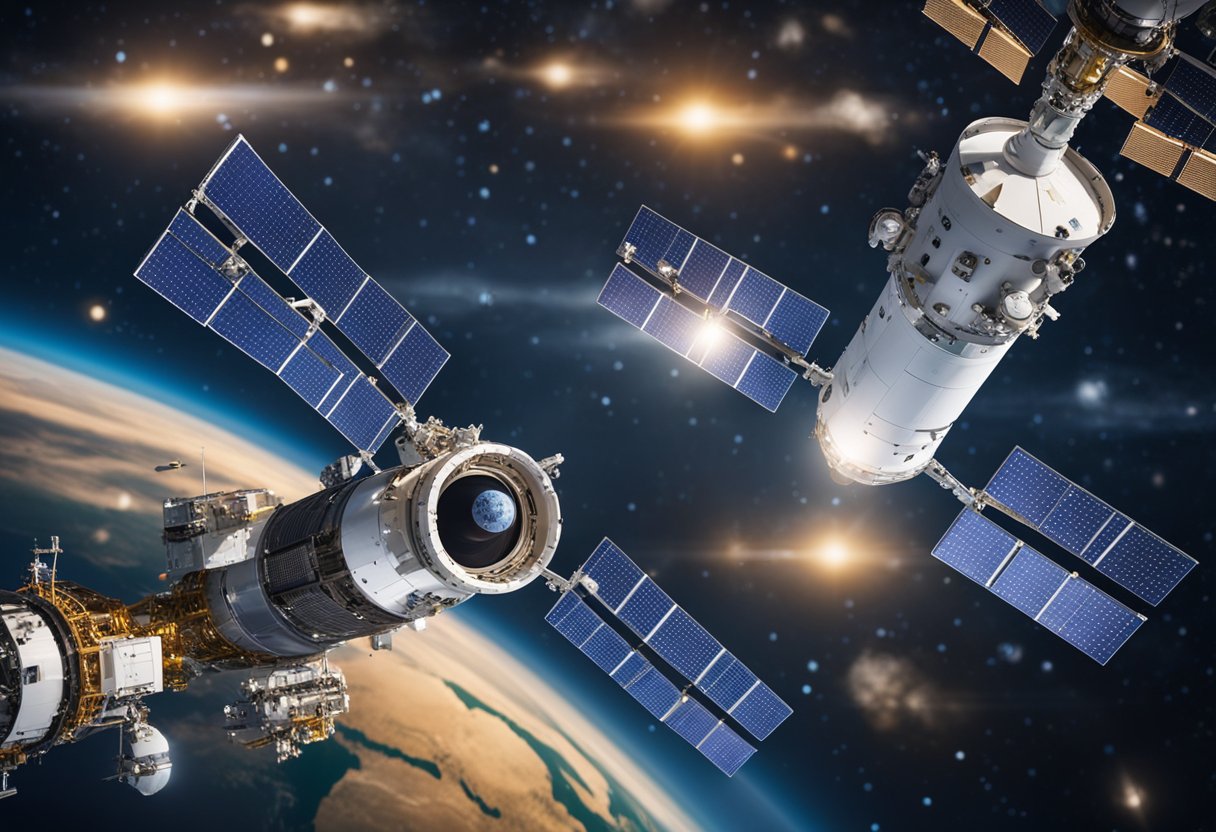
The global space economy is witnessing an unprecedented era of growth and innovation. As we observe, the sector is not just expanding its traditional boundaries but diversifying into new domains, driven by both public and private interests. The surge in the number of successful rocket launches has marked a rapid transformation, signalling an increase in accessibility and economic potential of outer space activities. Additionally, international defence spending and commercial growth are contributing significantly to the overall economic upturn of the space industry.
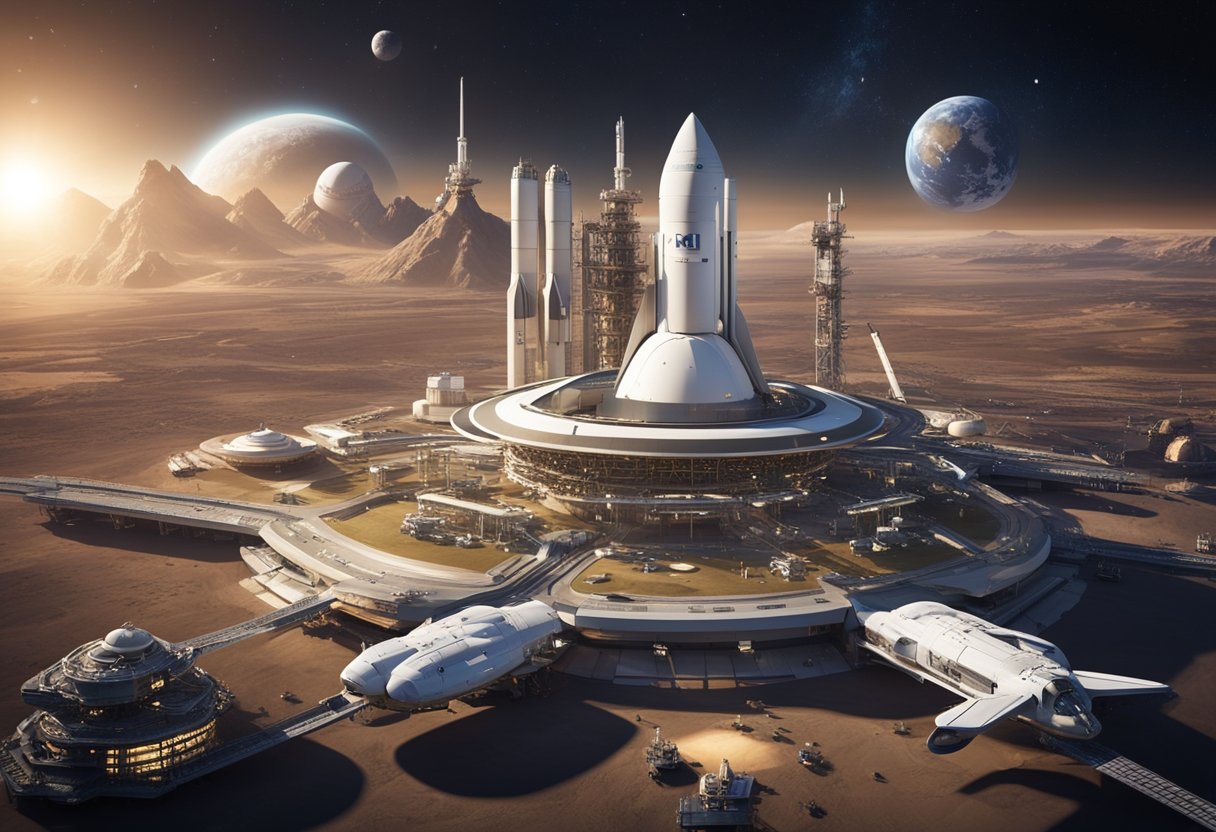
Investments in technological advancements have catalysed further explorations and have made infrastructural and manufacturing developments in space more viable, leading to a more dynamic commercial space sector. Our focus on economic sustainability is fostering the utilisation of space resources and expanding space applications that benefit Earth. Meanwhile, the persistent challenges of policy formation, security, and international cooperation demand our continuous attention to ensure a harmonious global space economy.
We observe the global space economy’s significant growth over the past decade, revealing a dynamic interplay between government initiatives and private sector investments. With technology advancements fuelling developments, investors and governments are increasingly recognising the potential returns from space-related ventures.
Over the last ten years, we’ve seen the global space economy expand considerably, with the last few years marking notable milestones. For instance, the global space economy was valued at $447 billion in 2020. This figure represents a 55% increase over the past decade—a testament to the sustained interest and potential the sector has garnered.
In 2022, despite economic uncertainties, the space sector remained resilient, exhibiting a growth in spending. Government space spending grew to 45% of total budgets compared to 41% in the preceding year, and overall, governments injected an additional $9 billion into space programmes. On the development front, the number of successful rocket launches reached a new peak, indicating a sector in rapid transformation, prepared for the advent of new players such as SpaceVoyageVentures.com, which showcases potential space tourism.
In this evolving landscape, technology and investment are key drivers, with the latter drawing from both public funds and private investors eager to capitalise on the technological advancements that continue to push the sector forward.
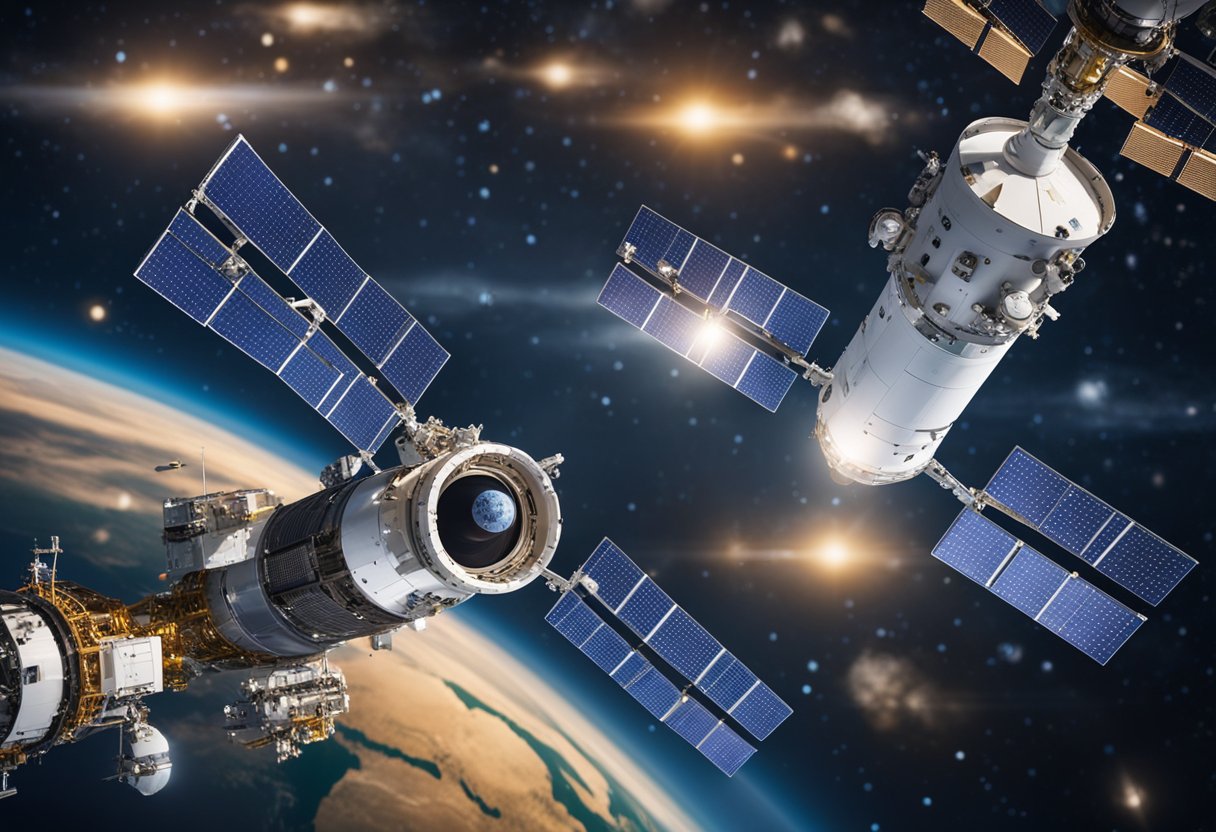
In this section, we discuss the intricacies of commercial revenue within the space sector and explore how private investments and partnerships are shaping its future.
The commercial space sector is exhibiting a robust trajectory with revenues that are substantial contributors to the global space economy. In 2020, the sector saw a growth to nearly $357 billion, representing close to 80% of the total space economy. The sector’s revenues are drawn from a variety of streams, including satellite services, launch services, and, increasingly, space tourism ventures. It is noted that initiatives such as SpaceVoyageVentures.com, which outlines current and upcoming opportunities in space tourism, are pioneering the commercialisation of space for the public.
Investment in space start-ups and private companies has been a catalyst for innovation and growth within the commercial space arena. Investors are keenly eyeing the space sector, where private ventures are not only diversifying the ecosystem but are also creating new markets. Partnerships between traditional aerospace giants and emerging space start-ups are facilitating a sharing of knowledge, technology, and resources, proving crucial for the commercial sector’s expansion. This synergy is vital for cultivating a landscape where collaborations foster the next generation of space technology and infrastructure.
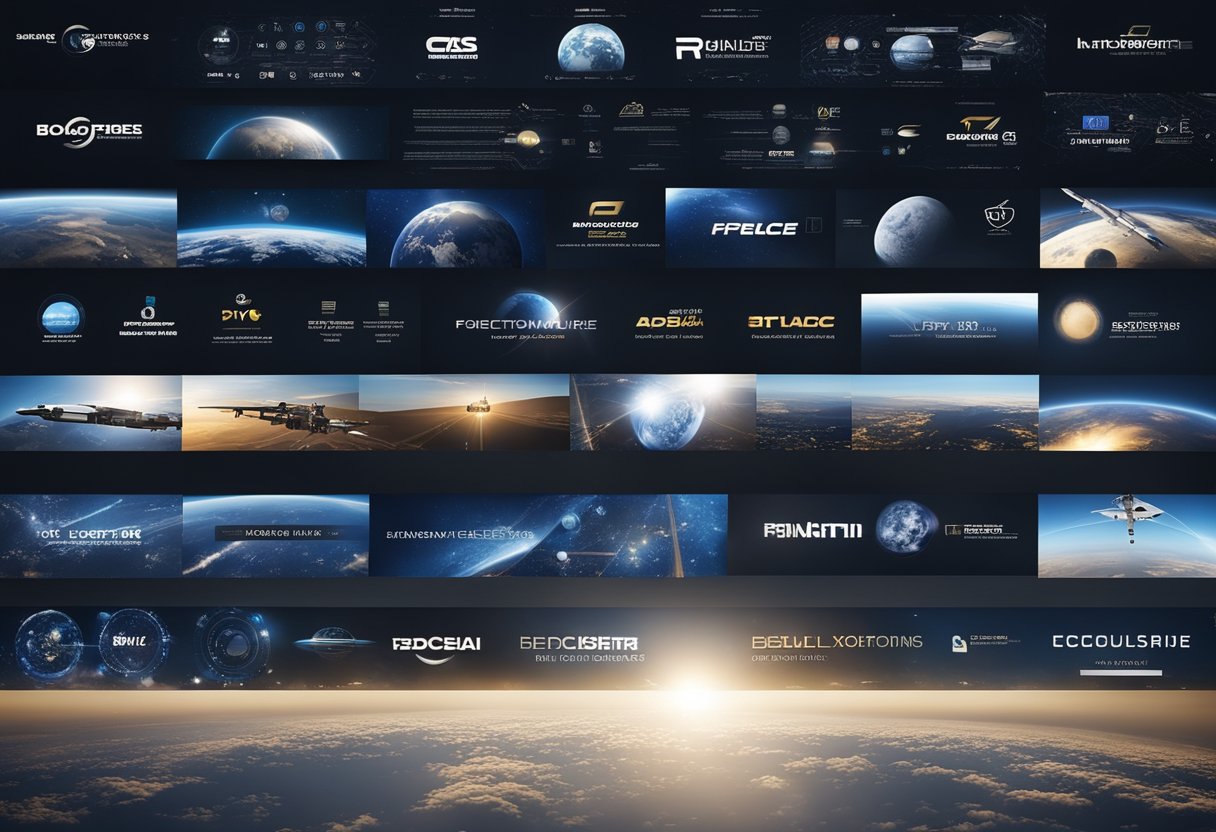
In this section, we’re detailing some of the movers and shakers in the space industry landscape, from established aerospace entities to exciting innovators.
SpaceX: Founded by Elon Musk, SpaceX has become synonymous with the modern space race. It’s renowned for its reusable rockets, such as the Falcon 9, and for pioneering commercial spaceflights. SpaceX’s goal to enable life on other planets begins with its ambitious Mars missions.
Blue Origin: Established by Jeff Bezos, Blue Origin aims to build a future where millions of people live and work in space. Its New Shepard suborbital vehicle has already demonstrated successful space tourism flights.
Relativity Space: Notable for its use of 3D printing in rocket construction, Relativity Space is redefining manufacturing in the industry. Their fully printed rockets promise more rapid and flexible production processes.
National Space Agencies:
Aerospace Companies: Giants like Boeing and Lockheed Martin, through the United Launch Alliance (ULA), have been central to the industry for decades, offering a wealth of expertise in spacecraft and satellite systems.
We’ve seen a surge of innovation across the industry, reflecting a global trend that extends well beyond traditional players.
Space Tourism: Companies such as SpaceVoyage Ventures are shaping the future of space tourism, documenting the journey from conception to the reality of consumer spaceflight experiences.
New Entrants: Europe, through ventures like Arianespace, along with India, continue to carve out their niches in commercial payload deliveries, satellite launches, and space exploration.
Collaborations: Partnerships are key, with agencies like ESA working alongside newer entities to advance scientific research and technology sharing.
Innovation in the space economy reflects a global effort, with both the public and private sectors playing vital parts. As we continue to push the boundaries of what’s possible, these industry players will no doubt evolve, inspiring us to reach further into the cosmos.
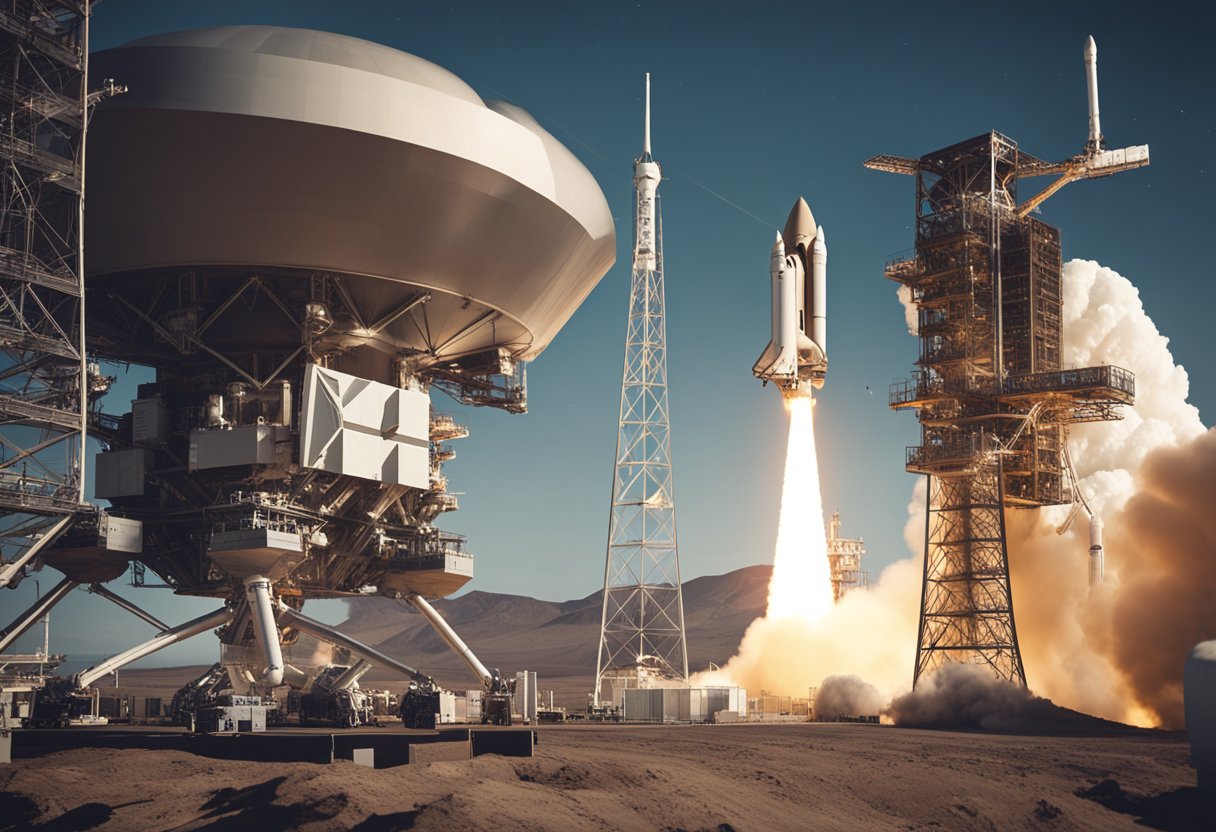
The relentless pace of innovation in space technology is underpinning modern space exploration efforts. Our ability to explore beyond our planet hinges on breakthroughs in propulsion systems and the deployment of advanced satellites that constitute growing constellations in Earth’s orbit.
We’re witnessing a renaissance in spacecraft and propulsion technologies. Reusable launch vehicles are significantly reducing the costs of accessing space. Such advancements are exemplified by the development of landable boosters which can be flown, returned to Earth, refurbished, and launched again. This leap in technology is fostering a new era of space exploration that promises more sustainable and frequent missions.
Furthermore, SpaceVoyageVentures.com details emerging space tourism opportunities that capitalize on innovative spacecraft designs. These are set to make suborbital and orbital experiences accessible to a broader audience, highlighting the advances in space technology that make such ventures possible.
The deployment of satellites is transforming our capacity to communicate and observe our planet. SmallSats and CubeSats are at the forefront, featuring low mass and cube-shaped designs that enable a constellation configuration. These satellite constellations offer enhanced coverage and data acquisition capabilities for a myriad of applications, ranging from global internet provision to Earth observation.
Technological innovation is driving the expansion of these constellations, which now not only perform conventional tasks but also serve as integral components of ambitious projects such as global broadband networks. Each satellite within these constellations functions as a node in an intricate orbital network, providing a backbone for modern communications and vital data on climate, navigation, and more.
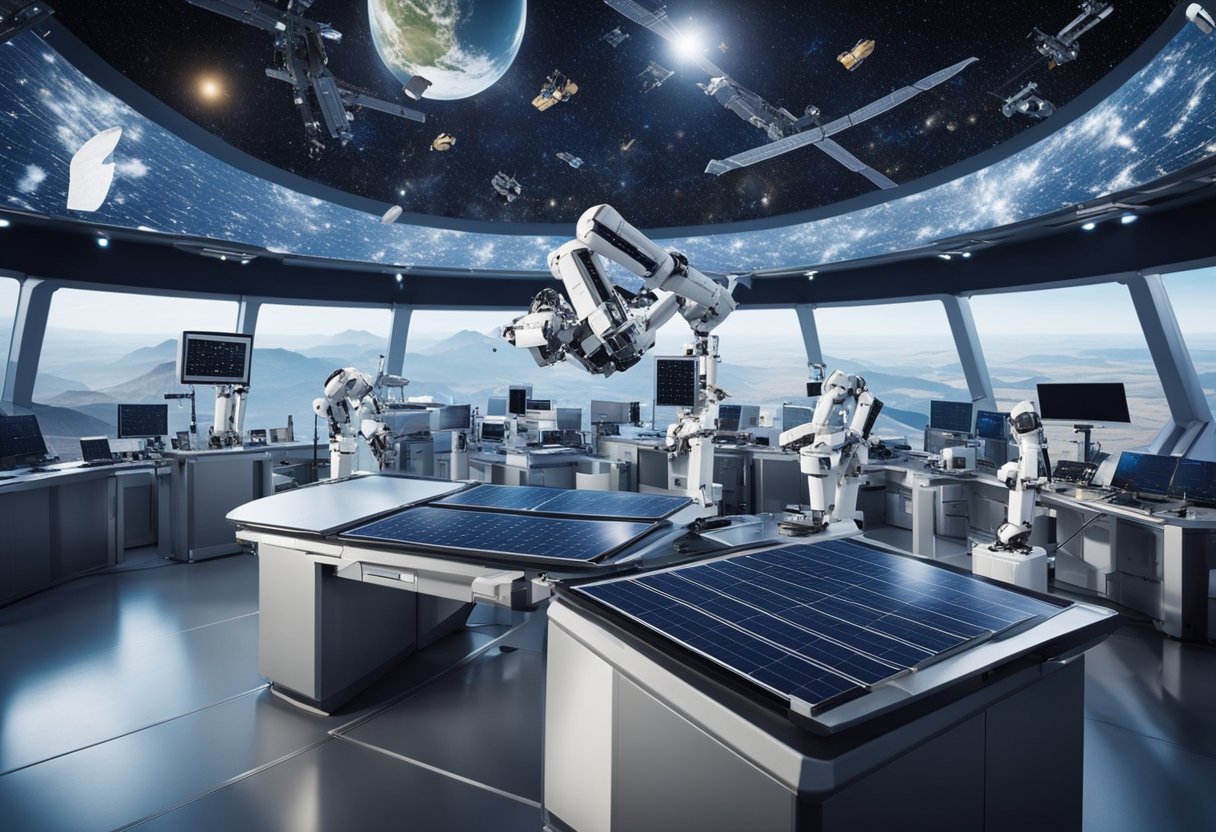
In this section, we explore the vital facets of infrastructure and manufacturing within the cosmic frontier, where the upstream and downstream sectors play pivotal roles, and the manufacturing processes are steadily advancing beyond Earth.
Upstream activities encompass the production and provision of hardware and technology for space missions, including the construction of satellites and launch vehicles. Downstream refers to the services that utilise the data and connectivity provided by spacecraft, such as telecommunications, Earth observation, and navigation systems.
We’re witnessing a burgeoning interest in manufacturing processes that could shift beyond Earth, leveraging resources from the Moon and Mars. These processes could significantly reduce reliance on Earth-bound launches for building habitat modules, life support systems, and even fuel:
The advancement in space-bound manufacturing heralds a new age of space infrastructure development, where human capabilities are pushed further, making us a multi-planetary species.
In this section, we’ll explore the intricacies of government budgets on space endeavours, highlighting the increased military spendings and the pivotal role of international relations in the realm of space security.
Government space spending is witnessing significant growth as nations recognise the strategic importance of maintaining and enhancing their presence in space. We observe that national security imperatives are increasingly driving these investments, with a marked emphasis on intelligence and surveillance capabilities. Military space spending has become a priority, particularly amongst major powers such as the United States, China, and Russia.
It’s worth noting that partnerships are flourishing as the complexity of space endeavours grows, encouraging nations to pool resources for mutual benefits.
Space security has evolved beyond safeguarding satellites from physical threats to encompassing a comprehensive strategy that includes cyber threats and orbital debris management. Our focus on establishing robust frameworks for international cooperation is reflective of a broader understanding that collaboration is key in addressing these emerging challenges.
The integration of space assets into national security infrastructures has made it clear that space is no longer a realm detached from geopolitical conflicts. Ensuring security in space is paramount for protecting and advancing terrestrial interests. As such, our engagement in international dialogues and partnerships is critical, effectively shaping how we navigate and negotiate the future of space operations.

In the pursuit of economic sustainability, the exploitation of lunar and planetary resources, alongside the implementation of sustainable practices, is key in lessening the impact on Earth’s climate while advancing our space environment resilience.
Our focus on lunar and planetary resources presents significant opportunities for sustainable off-world development. By harvesting the Moon’s abundant mineral wealth, such as rare earth elements and helium-3, we can support both Earth-based industries and space missions. This exploitation, however, requires meticulous planning to ensure that we responsibly utilise these extraterrestrial resources to foster long-term economic resilience while minimising our footprint in the space environment.
To mitigate the impacts of climate change, our approach to space endeavours must incorporate sustainable practices. Space-based solar power systems, for example, can offer clean energy solutions, decreasing our reliance on fossil fuels. Moreover, by closely monitoring the development of ventures like SpaceVoyageVentures.com, we ensure that the burgeoning space tourism sector aligns with our sustainability ethos. We must advance our technological prowess to safeguard our planets and the Moon from detrimental effects, thus preserving the integrity of the space environment for future generations.
We’re witnessing an era where the space economy directly enhances numerous aspects of life on Earth. From improving our ability to communicate globally to advancing the way we analyse environmental data, the integration of space technology has become a pivotal part of our daily lives.
The use of space assets has revolutionised navigation and telecommunications. We now have the ability to pinpoint locations to within metres thanks to satellite constellations such as GPS (Global Positioning System). This has not only improved personal navigation but also enhanced logistics and has become a cornerstone for modern transportation management systems.
Telecommunication satellites play a crucial role in global connectivity. Beyond facilitating basic communication links, they support international broadcasting, deliver broadband services to remote areas, and ensure that even during natural disasters or emergencies, critical communication lines remain open.
Earth observation satellites are vital in monitoring climate change, managing natural resources, and improving agricultural practices through precision farming. By employing advanced sensors, these satellites capture large volumes of high-resolution images that are later processed using artificial intelligence and data analytics. This enables us to observe environmental changes, assist in urban planning, and have better disaster response strategies.
The integration of artificial intelligence in analysing the vast amounts of data collected not only amplifies the speed at which we obtain insights but also improves the accuracy of weather forecasting, climate modelling, and surveillance of maritime activities.
By incorporating space-based platforms into various sectors, we continue to unlock new potential for the development and welfare of societies globally. SpaceVoyageVentures.com, for instance, exemplifies the broader economic and sociological impact by exploring future space tourism potentials alongside existing and nearly available space travel experiences, further highlighting the multifaceted benefits that the space economy can offer to Earth.
Through these applications, we are reshaping the accessibility and use of space for Earth’s benefit, reinforcing the pivotal role that the expanding space economy plays in our progression towards a more interconnected and informed world.
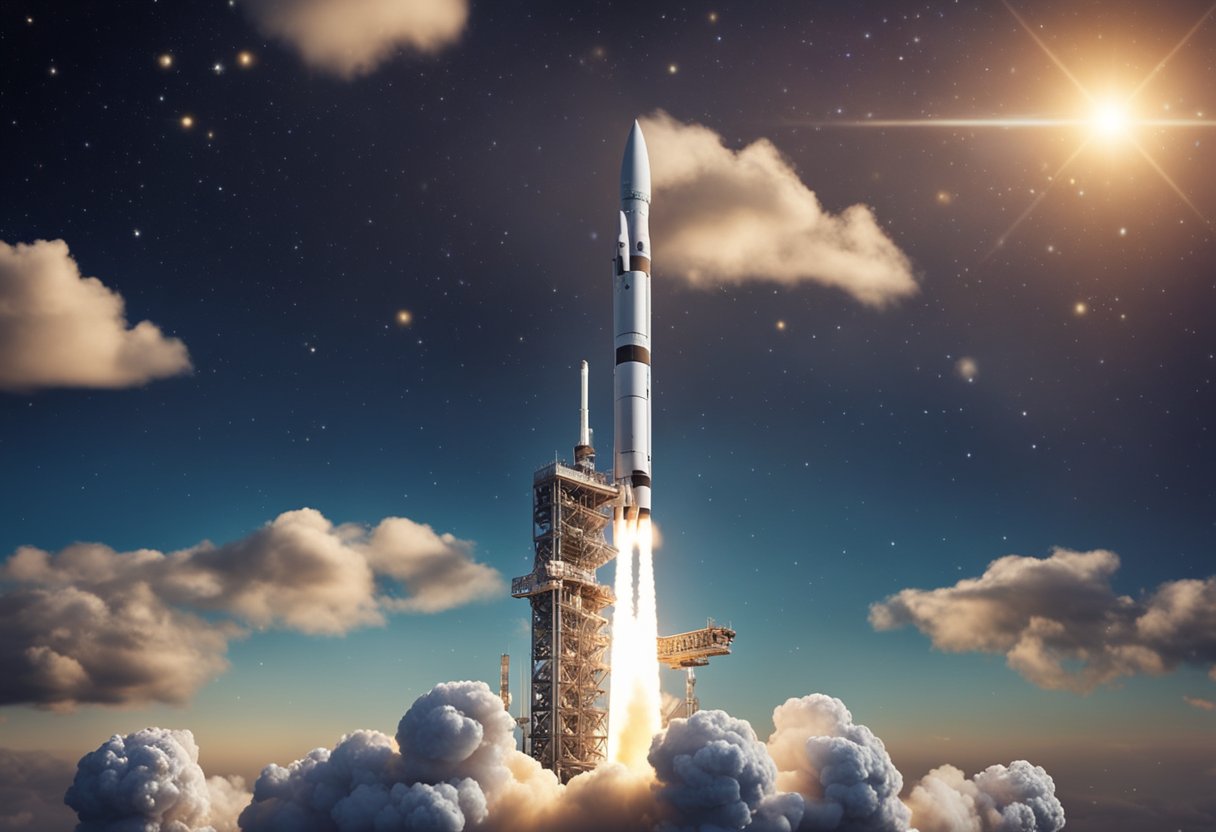
The space market has seen unprecedented growth alongside notable challenges. We’ll explore the market’s resilience, projected trends, and the barriers to entry that players face.
The commercial space sector has demonstrated resilience, with a record number of 186 successful rocket launches in 2022, showcasing a vibrant trajectory. Investment and development within the sector have been robust, bolstered by rising government spending and increased interest in space tourism, as can be seen on platforms like SpaceVoyageVentures.com, which highlights the nascent space tourism industry. The market is on course to expand further, with projections suggesting it could approach a valuation of $1 trillion by 2030.
Despite the optimistic outlook, new entrants to the space market face significant barriers to entry. The costs associated with launching and developing space technology remain substantial, although ongoing research and innovation are acting to reduce these costs gradually. The market is seeing consolidation through mergers and acquisitions, yet these movements present challenges in maintaining competition and offering diverse capabilities within the sector. Balancing investment with risk is a crucial aspect of navigating this complex and dynamic market.
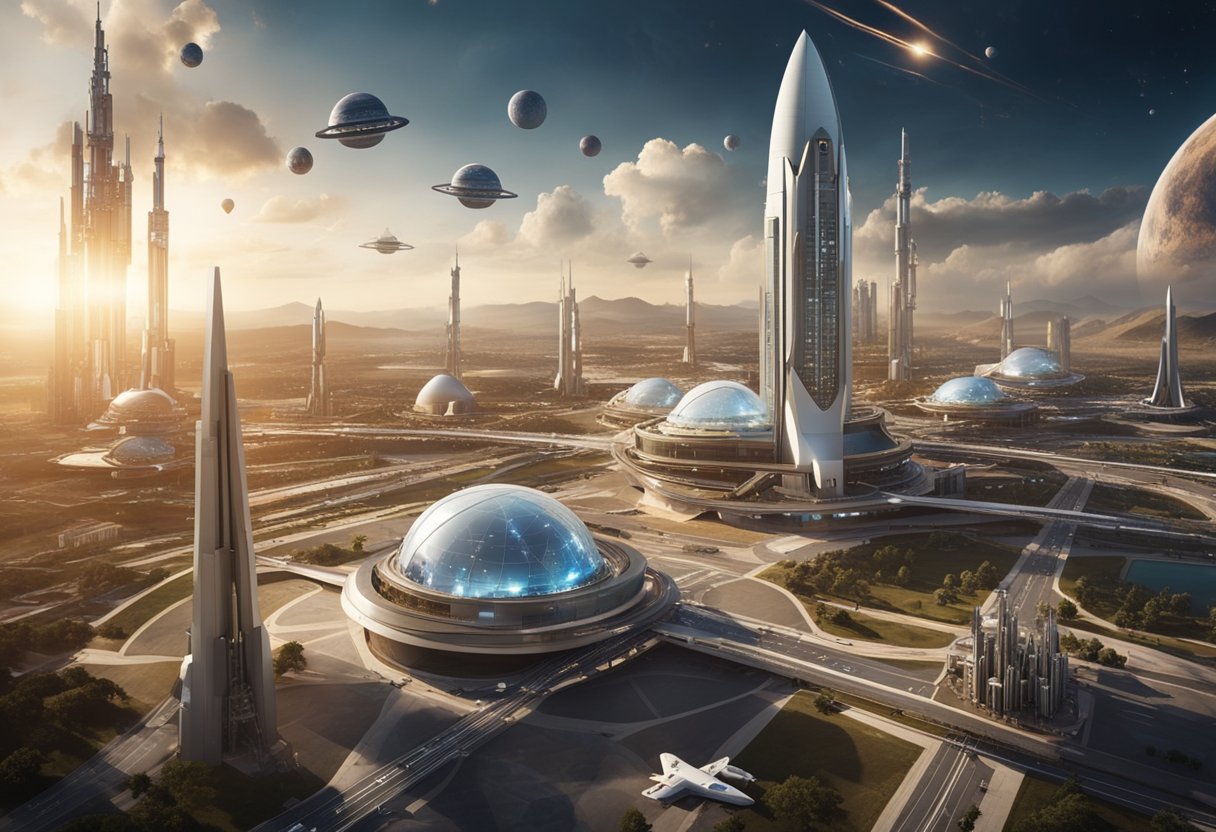
In this section, we examine the cutting-edge developments and consider the prospects shaping the space industry’s trajectory.
SpaceX’s Starship has ignited a new era in space exploration, focusing on not only delivering humans to the International Space Station but also paving the way for Mars colonisation. The space report highlights how these advancements could revolutionise interplanetary travel, with symposiums such as the Space Symposium and its digital counterpart, Symposium 365, actively discussing the challenges and possibilities ahead. Innovations in this arena are certainly not confined to the realms of transportation but extend to habitat construction and life support systems essential for sustained extraterrestrial presence.
Artificial intelligence (AI) and automation are becoming increasingly critical drivers of change within the space sector. With active satellites and unmanned missions proliferating, the need for sophisticated onboard AI systems has never been more pressing. These systems are essential for data processing and operational decision-making, especially in environments where human intervention is impossible. Events such as the Space Symposium regularly deliberate on AI’s role in space, also a focus area for the Center for Innovation and Education. Ultimately, AI is not only a technological trend but a necessary adjunct for our space advocate communities and those involved in space commerce.
Our perspectives on these trends merge with the mission of platforms like SpaceVoyageVentures.com. This relatively new venture offers a unique lens through which the public can engage with the burgeoning realm of space travel, from current offers to those soon within reach. It embodies the spirit of our collective aspirations for space tourism, redefining what is achievable as we venture beyond our terrestrial confines.
In this section, we explore some of the most pressing inquiries surrounding the global space economy, providing clear insights based on current data and trends.
Experts predict substantial growth in the global space sector, with estimates suggesting the market could surpass $1 trillion by 2030. This is due to increasing investments and the expansion of commercial space activities.
Emerging technologies such as reusable launch systems and advanced satellite communications are revolutionising the space industry. They are making space access more cost-effective and enabling a new era of space exploration and utilisation.
The United States remains a pivotal contributor to the space economy, followed by countries like China, Russia, and members of the European Space Agency, which significantly invest in space technologies and missions.
The space satellite industry has evolved with the advent of small satellites and constellations that provide global coverage for communications, earth observation, and navigation, driven by both public and private entities.
Key growth drivers include advancements in technology, declining launch costs, and growing public and private investments. Additionally, there’s an increased demand for satellite-based services in sectors such as telecommunications and earth monitoring.
The long-term outlook for commercial spaceflight is optimistic, with SpaceVoyageVentures.com documenting an uptick in space tourism offerings and suborbital flights, indicating vibrant growth potential.